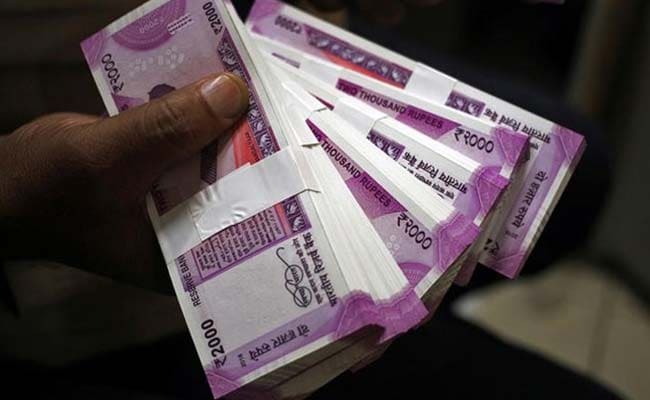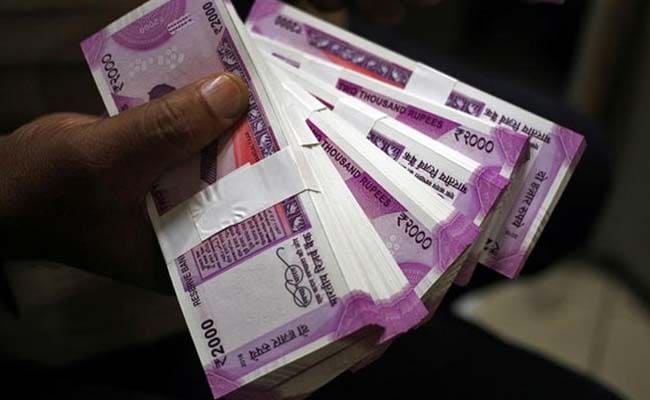[ad_1]

This comes after the Reserve Bank of India stepped up purchases of overseas forex. (Representational)
Washington:
The US on Wednesday added India together with Taiwan and Thailand to the ‘monitoring listing’ of forex manipulating international locations that features main buying and selling companions like China and 6 others.
It additionally branded Vietnam and Switzerland as forex manipulators.
Other international locations within the monitoring listing are Japan, South Korea, Germany, Italy, Singapore and Malaysia. Ireland has been faraway from the Monitoring List, the US Department of Treasury stated in its report ‘Macroeconomic and Foreign Exchange Policies of Major Trading Partners of the United States’ submitted to the Congress on Wednesday.
Over the 4 quarters by June 2020, 4 main US buying and selling companions –Vietnam, Switzerland, India, and Singapore–intervened within the overseas change market in a sustained, uneven method, it stated.
Vietnam and Switzerland–exceeded the 2 different goal standards established by Treasury to establish probably unfair forex practices or extreme exterior imbalances, which might weigh on US progress or hurt American employees and corporations.
“The Treasury Department has taken a strong step today to safeguard economic growth and opportunity for American workers and businesses,” stated US Treasury Secretary Steven T Mnuchin.
“Treasury will follow up on its findings with respect to Vietnam and Switzerland to work toward eliminating practices that create unfair advantages for foreign competitors,” he stated in a press launch issued by the Treasury Department.
The Treasury discovered that 10 economies warrant placement on Treasury’s ‘Monitoring List’ of main buying and selling companions that benefit shut consideration to their forex practices: China, Japan, Korea, Germany, Italy, Singapore, Malaysia, Taiwan, Thailand, and India, the final three being added within the report.
Based on Reserve Bank of India’s frequently printed intervention information, India’s web purchases of overseas change accelerated notably within the second half of 2019, and following gross sales through the preliminary onset of the pandemic, India sustained web purchases for a lot of the primary half of 2020, the report stated.
This pushed web purchases of overseas change to $64 billion, or 2.four per cent of GDP, over the 4 quarters by June 2020.
“Treasury continues to welcome India’s long-standing transparency in publishing foreign exchange purchases and sales,” the report stated, including that it encourages the authorities to restrict overseas change intervention to durations of extreme volatility, whereas permitting the rupee to regulate primarily based on financial fundamentals.
“By further opening the economy to foreign investors, India can also support economic recovery and bolster long-term growth,” stated the report.
According to the Treasury, India’s economic system contracted sharply within the first half of 2020 because of the collapse in home demand introduced on by the COVID-19 pandemic. The authorities responded with modest direct fiscal help of round two per cent of GDP and substantial financial easing.
India’s deep home demand contraction and slower restoration relative to its key buying and selling companions contributed to the economic system’s first four-quarter present account surplus since 2004 (0.four per cent of GDP over the yr to June 2020).
India for a number of years has maintained a big bilateral items commerce surplus with the United States, which totalled $22 billion within the 4 quarters by June 2020, it stated.
The Treasury stated that India has been exemplary in publishing its overseas change market intervention, publishing month-to-month spot purchases and gross sales and web ahead exercise with a two-month lag. The RBI states that the worth of the rupee is broadly market-determined, with intervention used solely to curb undue volatility within the change charge.
The RBI bought overseas change on web in 10 of the 12 months by June 2020, with web intervention (each spot and ahead intervention) reaching $64 billion, or 2.four per cent of GDP. While purchases slowed through the onset of the pandemic, and the RBI engaged in web gross sales in March 2020, the RBI’s web purchases once more accelerated in mid-2020 as portfolio inflows resumed and overseas direct funding remained sturdy.
“Rupee volatility did not appear to have been particularly elevated in the four quarters through June 2020, however. These purchases have led to a rapid rise in total reserves that are now well in excess of standard reserve adequacy benchmarks. As of June 2020, foreign currency reserves stood at $466 billion, equal to 4.4 times gross short-term external debt. Reserves have continued to grow in recent months, reaching $502 billion in September 2020 as purchases accelerated further in July and August,” it stated.
The Treasury stated that Indian authorities ought to permit the change charge to maneuver to mirror financial fundamentals and restrict overseas change intervention to circumstances of disorderly market situations.
It stated India also can leverage the restoration interval to pursue structural reforms that can open its market additional to overseas funding and commerce, together with overseas portfolio funding in Indian sovereign and sub-sovereign bonds, thereby fostering stronger long-term progress.
[ad_2]
Source hyperlink












